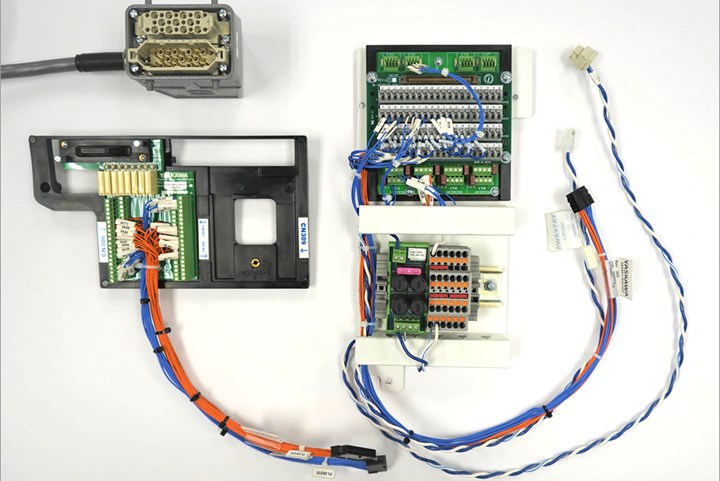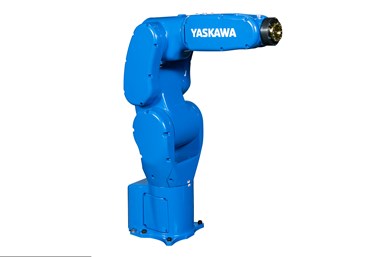Interface Six-Axis Robots with Injection Molding Presses
Yaskawa Motoman’s new SPI-67 hardware/software interface for six-axis robots is designed for parts removal from horizontal injection molding machines.
The Motoman Robotics Div. of Yaskawa America, Inc. has introduced a hardware and software interface for its six-axis industrial robots that’s said to easily accommodate the requirements of parts removal from horizontal injection molding machines. The SPI-67 interface can be installed in the YRC controller and connected to HC-Series and GP-Series Yaskawa Motoman robots.

New SPI-67 interface for Yaskawa Motoman six-axis robots and horizontal injection molding machines. (Photo: Yaskawa Motoman)
Prior to this product there were two options—either an external cabinet containing the necessary I/O interfaces, but without some of the integrated components, and at significantly higher cost to customer; or manually connect to available I/O blocks through trial and error and make sure everything is connected correctly, which requires significantly higher expertise.
The SPI-67 interface is said to comply with EuroMap 67 standards for robot-to-press communications and with U.S. SPI electrical interface guidelines. A 50-pin connector acts as a physical link between the robot and the injection machine. Dual-channel/redundant safety signals allow direct connection the press. The SPI-67 transmits standard handshaking signals such as door status, robot operating and ejector position.

New SPI-67 interface is designed for Motoman GP-Series (pictured) and HC-Series six-axis robots.
(Photo: Yaskawa Motoman)
The new interface mounts within the YRC-1000 controller, so there is no need for an additional cabinet. Direct Connect I/O cards allow easy access to the robots native 40 inputs and 40 outputs, while adding valuable relay outputs. Two unused dual-channel safety contacts can be used to interface with safety input devices, such as light curtains or safety scanners, or can be paired with the Functional Safety Unit (FSU) output functions to obtain dual-channel, dry-contact safety-rated outputs.
Related Content
-
Optimizing Pack & Hold Times for Hot-Runner & Valve-Gated Molds
Using scientific procedures will help you put an end to all that time-consuming trial and error. Part 1 of 2.
-
Using Data to Pinpoint Cosmetic Defect Causes in Injection Molded Parts
Taking a step back and identifying the root cause of a cosmetic flaw can help molders focus on what corrective actions need to be taken.
-
Diagnosing Defects: Determine True Root Cause Before Adjusting a Process
Common defects can have common causes — flash equals worn mold shutoffs, right? Except when they don’t. Trust your eyes, but verify the root cause before adjusting a process.













